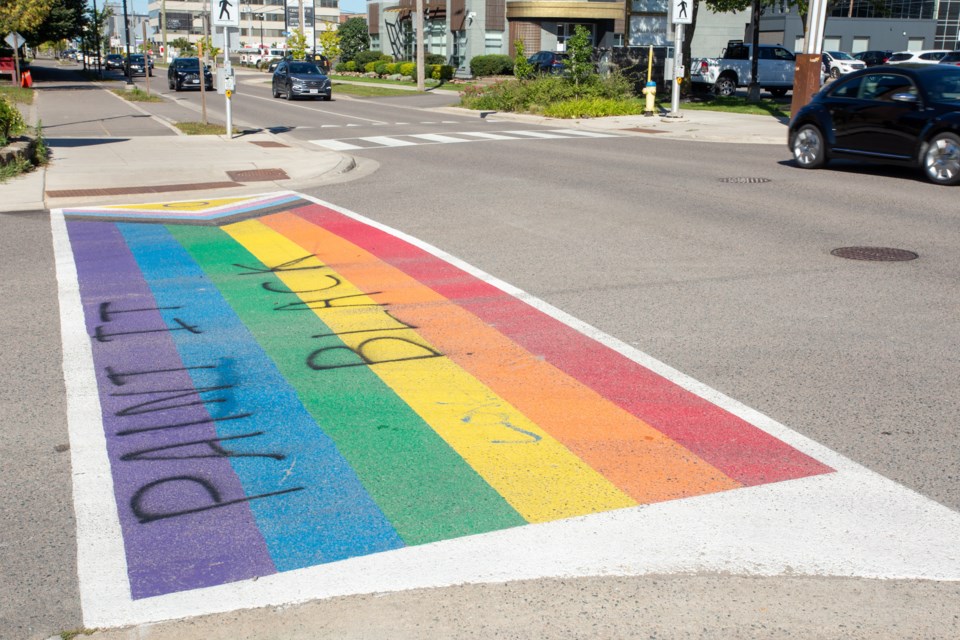After some alarming graffiti incidents over the weekend, Sault Ste. Marie city council decided to create a graffiti subcommittee of its cultural vitality committee to tackle the problem.
As SooToday's Kenneth Armstrong has reported, anti-Indigenous graffiti was spray-painted onto Algoma Steel property on Saturday.
Also on Saturday, the words 'paint it black' were painted by someone in similar black lettering on the Pride crosswalk at Spring and Bay streets.
That was the second time in three months that the colourful crosswalk has been marred by graffiti.
Here are the duties assigned to the new graffiti subcommittee:
- to receive written communications from and liaise with interested parties regarding graffiti
- provide information to students in Grades 7 to 9 on the opportunities available within the community as it pertains to art
- work together with both school boards to provide hands-on experience for public art mentorship opportunities
- liaise with city staff in response to inquiries from the community relating to art
- liaise with community partners as it pertains to graffiti removal and or enforcement
- establish partnerships to alleviate barriers to participation in arts and culture opportunities
City council previously created a graffiti committee in November 2013.
That committee worked with a wide range of community stakeholders to develop an educational brochure, arranged for removal of nuisance graffiti, wrapped utility boxes with designs by local artists, prepared an inventory of local graffiti, painted one mural, liaised with school boards and arranged the Graffiti Reframed project by NORDIK Research Institute.
The graffiti committee wound down late in 2016.
Brent Lamming, the city's deputy chief administrative officer for community development and enterprise services, advised city council this week that: "It would be challenging for the city to lead a graffiti committee, especially with a focus on providing education in the schools and obtaining funding while balancing existing projects and duties."
"Staff does not have the capacity to engage all the youth in or outside the classroom for educational purposes on how art can be a great avenue to develop skills and providing low-cost opportunities," Lamming said in a written report.
"However, staff can definitely participate and lead under the existing cultural vitality subcommittee group being suggested," he said.
The new graffiti subcommittee will be comprised of three members of the cultural advisory committee, including one member of city council.
The subcommittee may draw on the following as resources, as needed:
Staff lead
- arts and culture lead
City staff
- director community services
- director public works and engineering services
- manager recreation and culture
- deputy city clerk
- assistant city solicitor, legal department
- chief building official, building division
- corporate communications officer
- director community services
- Indigenous advisor
Community members
- other members of council if interested
- CAO Social Services or delegate
- director Algoma District School Board or delegate
- director Huron Superior Catholic District School Board or delegate
- director Art Gallery of Algoma
- deputy police chief or delegate
- district manager Canada Post
- manager Downtown Association
- marketing and customer communications, PUC Services Inc.
- corporate communications, Sault Ste. Marie
- CEO, Sault Ste. Marie Library
- NORDIK Research Institute
